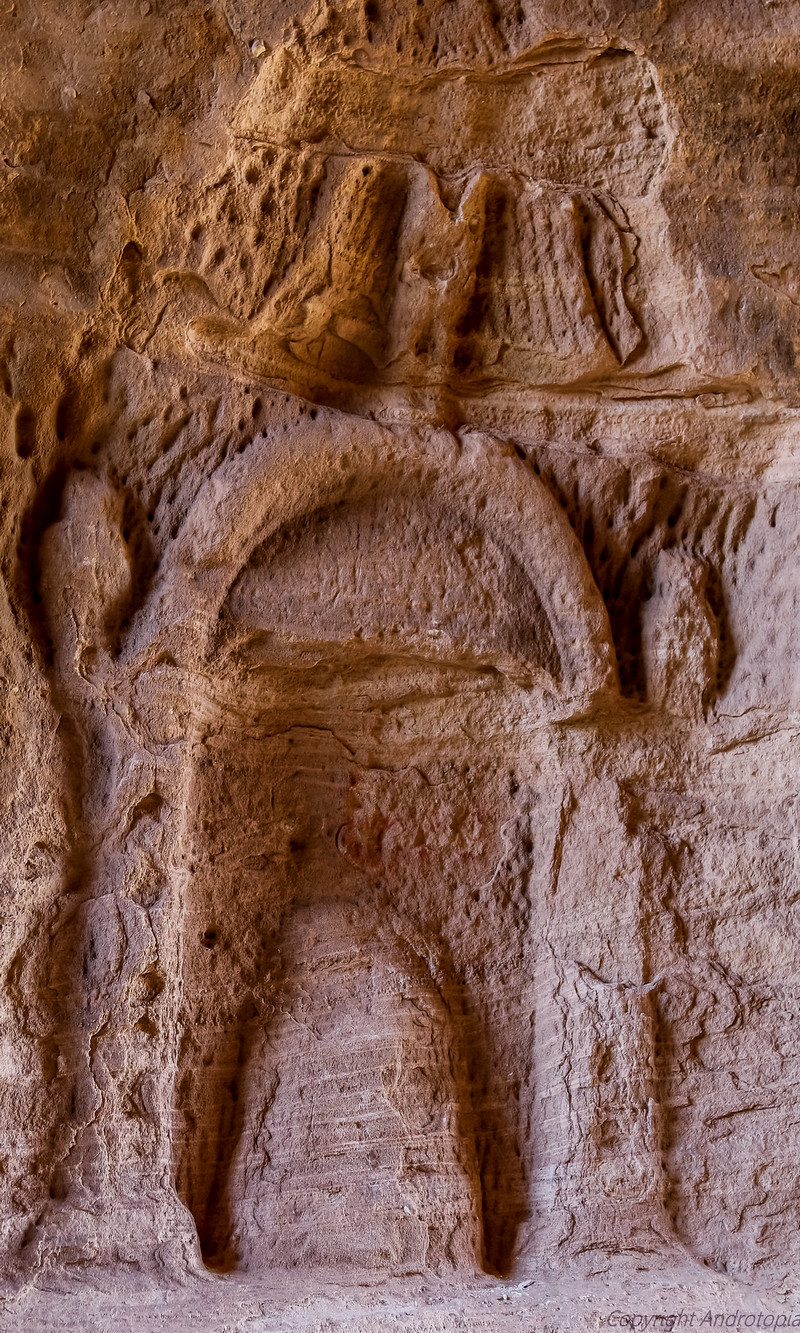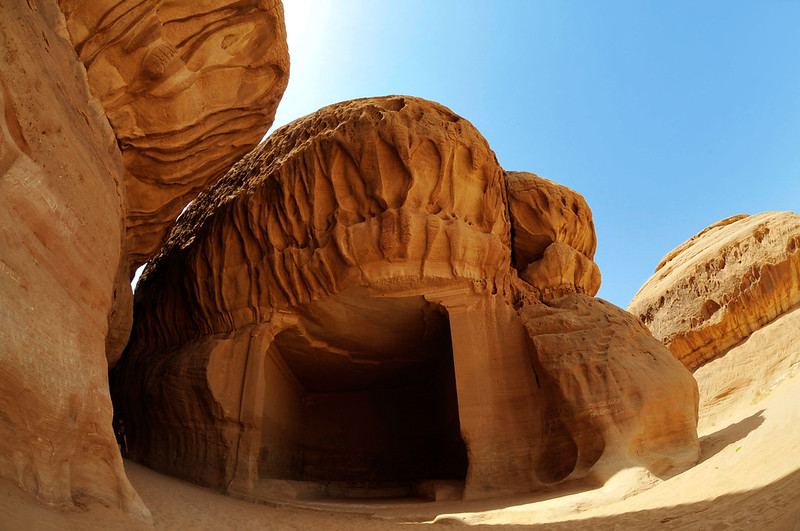Madain Saleh, a pre-Islamic archaeological site, is located in the Al-Ula sector, Saudi Arabia's Al Madinah Region, about 400 km northwest Madinah. It was previously known as Hegra, and this site was once the most important preserved site of the civilization Nabataeans to the south of Petra, Jordan. It contains 131 large, rock-cut tombs decorated with facades and many of which have inscribed Nabataean epigraphs. They are spread over 13.4 km. Madain Saleh is a shining example of Nabataeans' hydraulic and architectural skills.
 |
| Madain Saleh |
Hegra Saudi Arabia
Madain Saleh in Saudi Arabia — The Nabataean empire stretches from its capital Petra (now Jordan), deep into the Arabian Peninsula. It ruled vast, semi-arid areas and earned its wealth by trading incense, spices, and aromatic plants. Madain Saleh was a major stop on the main northern-south trade route. In 106 AD, Nabataean Kingdom was seized by the Romans. They changed the trade route from the Arabian Peninsula's overland north-south route to the Red Sea maritime route. Hegra's status as a trade center declined, and it was eventually abandoned and lost to the sea.
Rock city worship — It is not known much more about the history of Hegra, from the fall of the Roman Empire and to the rise of Islam. This was because pilgrims and travelers only mentioned it on their way to Mecca. Hegra was a stop along the pilgrimage route that provided water and supplies for pilgrims. Ibn Battuta, a celebrated traveler from the 14th century, describes the Hegra's magnificent red-stone-cut tombs but does not mention human activities.
Mada’in Salih
Madain Saleh Saudi Arabia — The Nabataean Kingdom was at the crossroads of trade and culture. This can be seen in the diverse motifs used for facade decorations. They borrow stylistic elements from Egypt, Phoenicia, Egypt, and their native artistic style. The troglodytic graves were also decorated with Latin scripts and Roman decorations. Contrary to their elaborate exteriors, the interiors are plain and severe in rock-cut structures.
Cursed architecture — The site has been referred to as a "cursed" place, a reputation that the national government is trying to erase as it seeks out Mada'in Salih's potential as a tourist destination.
Mada In Saleh
Madain Saleh has been officially designated an archeological site since 1972 to protect its potential tourism. UNESCO declared Madain Saleh a site of patrimony in 2008 for its well-preserved remains of late antiquity, particularly the 131 monumental rock-cut tombs with elaborately decorated facades of the Nabataean Kingdom.
First Image / Source
 |
| Mada In Saleh |
Image / Source
 |
| Hegra Saudi Arabi |
Image / Source
 |
| Madain Saleh |
Image / Source
 |
| Rock city Worship |
Image / Source
 |
| Cursed architecture |
Image / Source
Madain Saleh Inside
 |
| Madain Saleh Inside |
Image / Source
 |
| Petra Saudi Arabia |
Image / Source
Elephant Mountain Saudi
 |
| Elephant Mountain Saudi |
Image / Source
 |
| Saudi Arabia Petra |
Image / Source
 |
| Madain Saleh in Saudi Arabia |
Image / Source
 |
| Mada'in Salih |
Image / Source
 |
| Mada In Saleh |
Image / Source
Madain Saleh Map
The Mysterious Madain Saleh of Saudi Arabia — Video
Qasr al Farid Tomb
Image / Source
Source → Timesofindia / Saudi-archaeology / Wikipedia



No comments:
Post a Comment